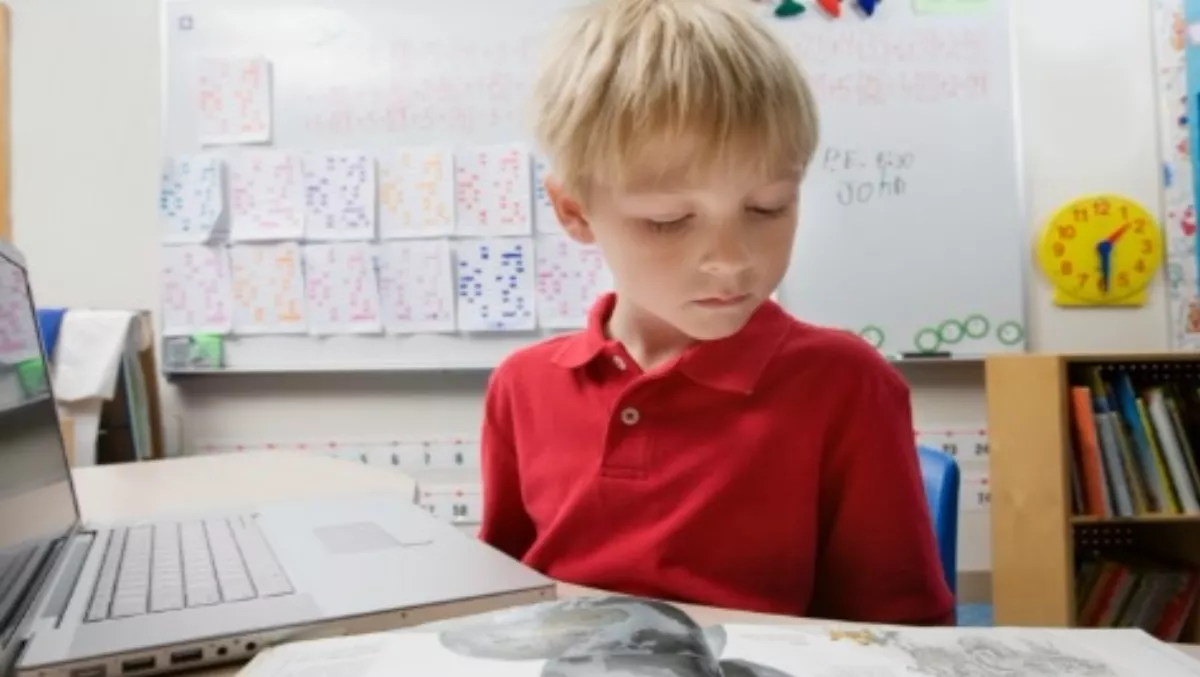
Kiwi educators: How are you using technology?
Technology can be used as a positive tool to help students with their education or it can impede learning, research shows.
Because of this New Zealand educators need to look at how they're using technology, and inspect how it's impacting students.
New research demonstrates that limitations of certain types of technology can lead students to modify or simplify their behaviour.
This leads to them limiting their thinking strategies and creates barriers to creating and problem-solving, says Sharon Oviatt, Incaa Designs president and research director.
Oviatt has examined the role keyboards and computers play in the process of thinking and learning, and says the way students enter information into a computer can significantly impact the way they learn.
While keyboards may seem like the best tool for learning, as they can reduce effort and enable a student to take more notes, research has found they can undermine the learning that happens when more effort is expended, Oviatt says.
Instead of thinking, curating, summarising and making connections, the student is merely photocopying when taking notes on a keyboard, said Travis Smith, Microsoft national education specialist, at a recent seminar in Auckland.
Adding a precise, on-screen digital pen, or introducing a solution that encourages greater engagement from the student increases their ability to produce appropriate ideas, solve problems correctly, communicate and build on complex ideas, make accurate inferences about information, and learn during note taking and knowledge creation, Oviatt says.
Taking a closer look at the research
Various studies have been conducted on the use of technology in the classroom, looking at how students take notes and how lectures are presented in a tertiary education setting.
One study divided a class into three sections. One section used only a keyboard to take notes, the second section used a keyboard and was told not to write everything down, and the third section used a digital stylus or paper to take notes.
The researchers looked at the ability of the students to recall facts and apply concepts from the class.
Those taking notes with a keyboard had depleted abilities in both areas, those taking partial notes with the keyboard had some factual recall but were only able to apply some concepts, and those who used a digital stylus or paper had improved performance in both.
This highlights the problem that is the misapplication of technology in education, says Smith.
Furthermore, it highlights the fact that visual and active learning, including annotating, drawing and writing notes, helps with learning and the thinking process, he says.
Monash University completed similar studies, focusing on how lecturers presented their classes.
The researchers asked a group of students what their preference was in regard to getting the lecturers notes, and found the majority said they wanted the notes ahead of the class.
However, the study found when students received the notes ahead of time, their learning became very passive.
When not provided with notes, students actively wondered what parts of the lesson were important and were more actively involved in thinking about the concepts.
Monash University also looked at the use of presentations such as keynotes and PowerPoint in the classroom, and what fundamentally changed when educators began using a computer.
The research found what was once written live on a whiteboard or overhead transparency had been distilled into a PowerPoint presentation. This resulted in a fundamental shift in how lecturers engaged with their students.
Instead of taking student on journey of what the lecturer was thinking and how they were going to solve that problem, students were given the static final result. This radically reduced student engagement and retention of information.
Monash University wanted to know how do to reverse this trend.
They equipped lecturers with stylus, told them to only put 60% of their content on the PowerPoint, and then annotate and mark it up live in front of students.
The results showed 80-90% of students preferred these lectures, 80% said it helped with their focus and engagement, and 85% said it helped them with their understanding.
"The style we apply to teaching can have a profound impact on students. Paper isn't going away, paper is just getting smarter," says Smith.
"We need to take students away from just looking at a computer and break it down into individual parts, to take a look under the hood of what the teacher's thinking," he says.
Kiwi educators need to critically evaluate how they're using technology in teaching, and look at whether their choices are accelerating learning, or making a student passive, says Smith.
Oviatt says since adults have faulty intuitions about how computer influence their performance, evidence-based research is needed to guide selection and use of new technologies.
"Schools and school systems need to understand that even with great teachers and excellent planning, computers can either enhance a student's ability to think, communicate and learn, or seriously undermine it," says Oviatt.


